Tata Harrier EV Review: Tata Motors Get Serious With Their Latest Premium Electric SUV Offering
The Harrier EV marks a turning point for Tata Motors. It’s powerful, polished, and finally ready to challenge global standards—not just on price, but on execution, comfort, and performance. This one feels different—for all the right reasons
Tata Motors spent years making cars that were fine. Adequate. Good value for money but nothing more. The Harrier EV changes that equation completely. Dual motors, legitimate all-wheel drive, luxury features that actually work, priced at ₹28.99 lakh. This feels different.
Tata Harrier EV Design: Understated Authority
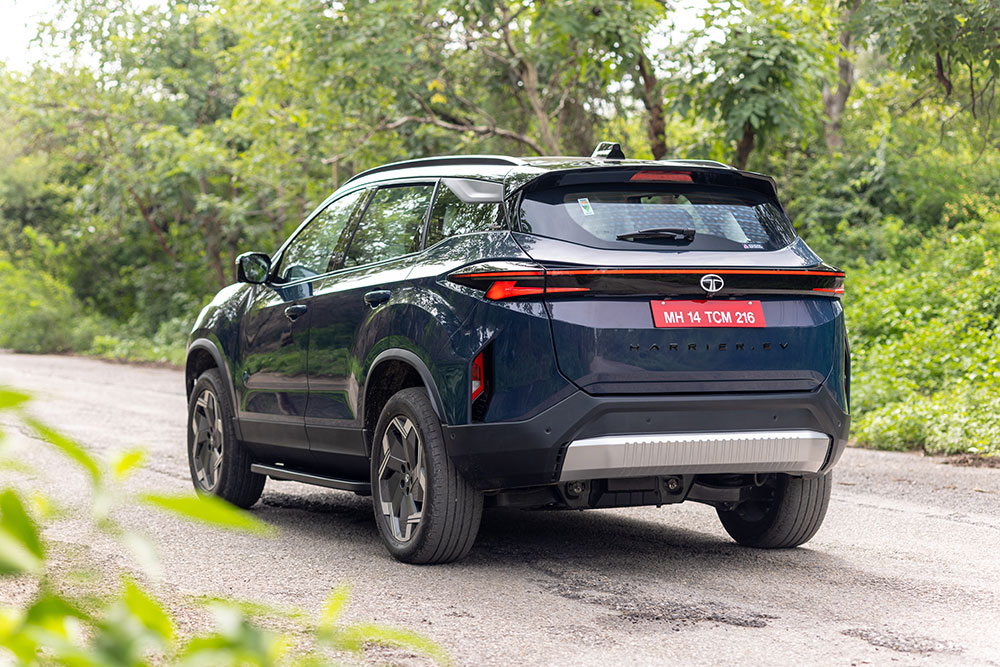
The Harrier EV looks like a Harrier with the grille blanked off and better wheels. This restrained approach works. While competitors chase aggressive styling and LED strips, Tata kept what already worked—muscular proportions without unnecessary drama.
The Nocturne Nainital paint shifts between blue and purple depending on light. Subtle enough to avoid looking gimmicky, sophisticated enough to feel premium. The LED lighting does a brief routine when you unlock the car—enough ceremony without becoming a show.
The 19-inch aero wheels look expensive because they are. The closed grille maintains the Harrier’s imposing presence while improving aerodynamics. Nothing screams “electric vehicle” except the badge.
Tata Harrier EV Interior: Where Money Shows
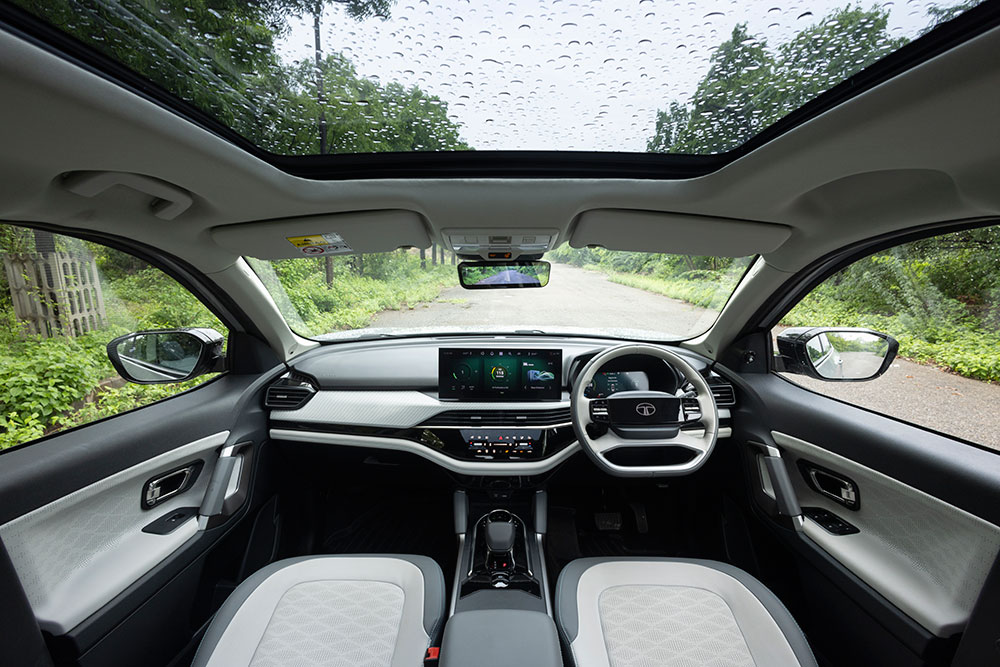
The 14.5-inch Neo QLED screen dominates the dashboard with smartphone-level clarity. More importantly, it responds instantly. No lag, no crashes, no frustrating delays that plague certain European systems.
The JBL audio system with Dolby Atmos creates proper surround sound. Not “good for a car” audio—genuinely good audio. Voices gain presence, instruments find their space, albums reveal details you missed. This quality usually requires dedicated listening rooms.
White leather covers the Empowered trim cabin. The material feels supple and looks expensive, though dust and spills become immediate problems. The panoramic sunroof adds light and drama when weather permits.
Details matter here. Ventilated seats actually cool your back. Wireless charging works with thick cases. Ambient lighting enhances rather than distracts. The circular key fob feels substantial in your hand.
Tata Harrier EV Space: Smart Packaging
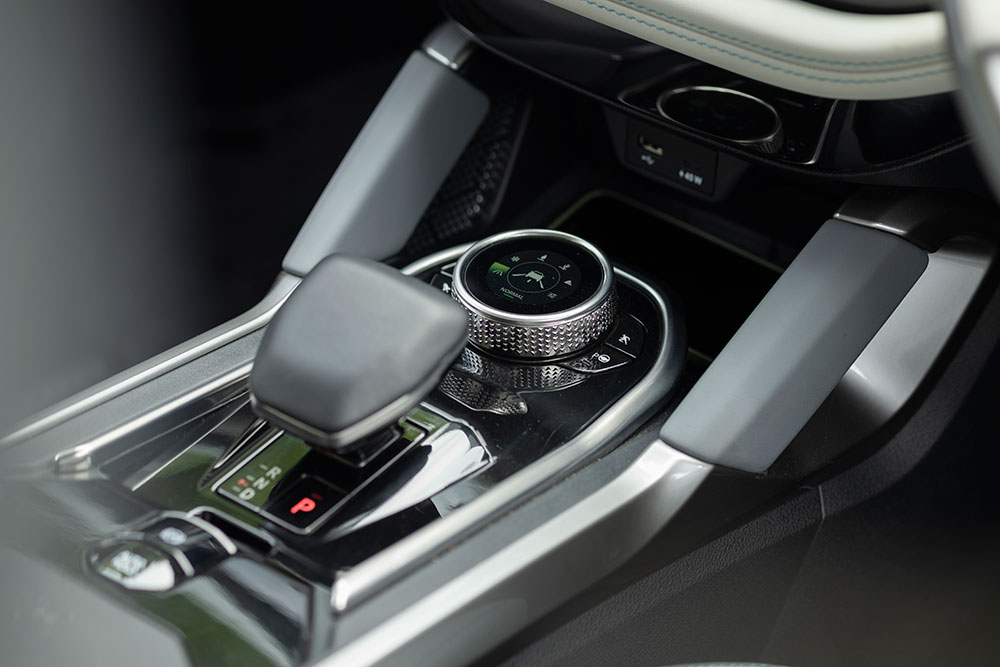
The rear floor sits completely flat, allowing three adults genuine comfort. Most EVs sacrifice rear space for battery placement—the Harrier EV avoids this through intelligent packaging.
USB-C ports deliver 65W charging, enough to power laptops rapidly. Boot space drops to 502 litres due to rear motor placement, but family luggage still fits without geometric puzzles.
The 67-litre frunk in RWD variants (35 litres in AWD) provides space for charging cables and emergency supplies. Small details that improve daily usability.
Tata Harrier EV Performance: Serious Power
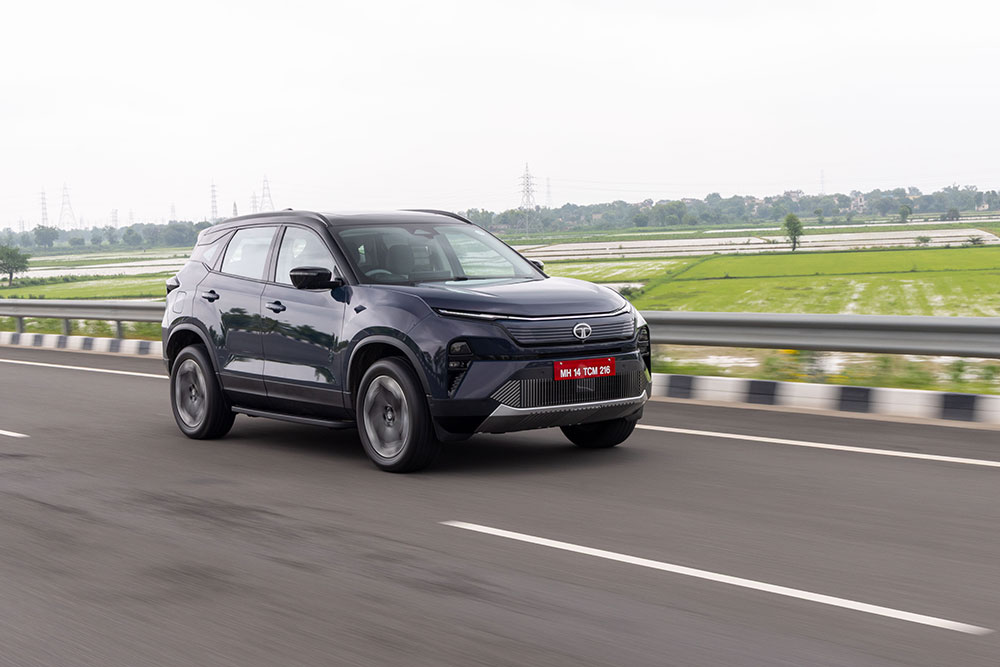
Dual motors generate 313hp and 504Nm, enough to hit 100kph in 6.3 seconds. These numbers matter less than how power arrives—smoothly and progressively rather than in violent bursts.
Four drive modes offer distinct characters. Eco dulls responses without making progress painful. City balances efficiency with usability. Sport sharpens everything. Boost unleashes maximum performance when battery charge exceeds 50%.
The all-wheel drive system works invisibly until needed. Point at mud or loose surfaces and traction sorts itself automatically. Six terrain modes adjust behaviour for specific conditions rather than just changing dashboard graphics.
Tata Harrier EV Dynamics: Unexpected Excellence
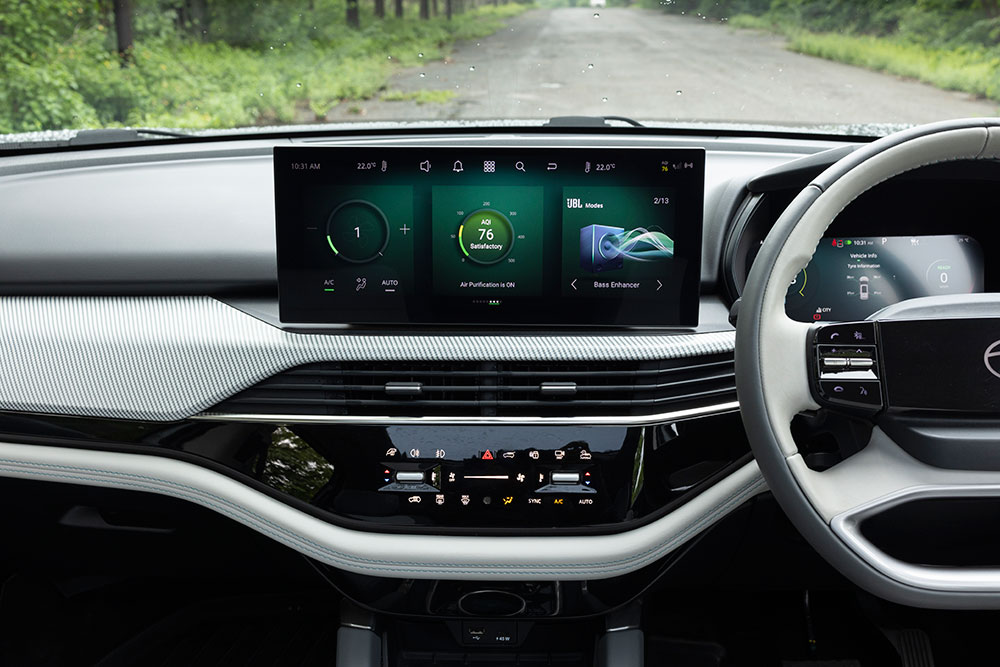
The suspension tuning impresses most. Frequency-dependent dampers absorb road imperfections while maintaining body control through corners. This balance usually requires much more expensive hardware.
Despite carrying 400kg more than the diesel Harrier, the EV handles better. The low center of gravity from floor-mounted batteries keeps body roll controlled. Steering builds weight naturally as speeds increase.
Regenerative braking offers four levels via paddle shifters. Level 3 approaches one-pedal driving without aggression. Level 0 allows coasting for highway efficiency. Each setting feels purposeful rather than arbitrary.
Tata Harrier EV Range: Honest Numbers
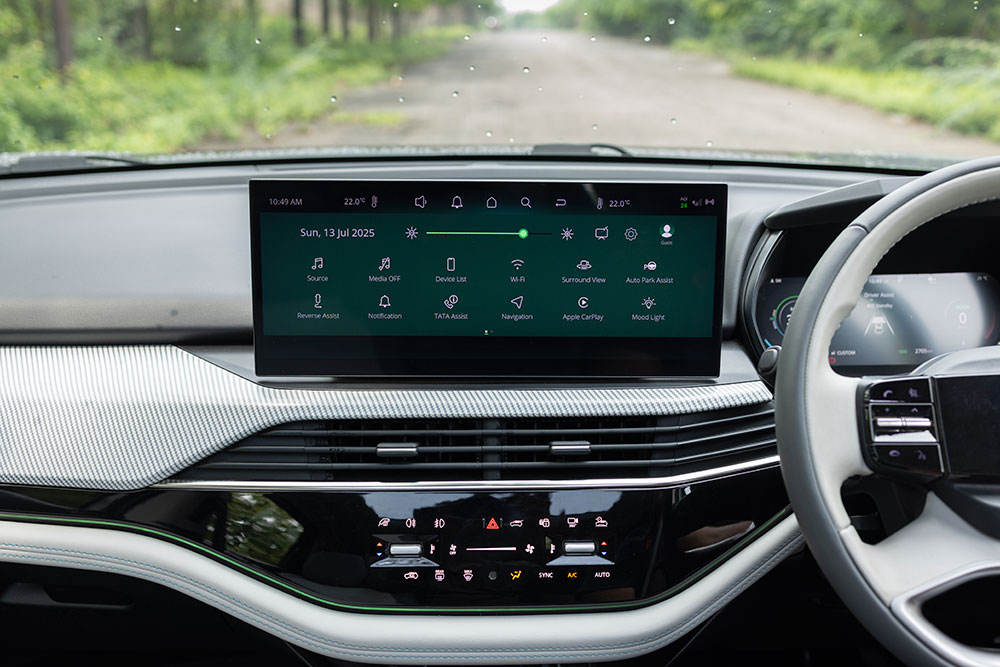
Real-world range hovers around 420km for the 75kWh variant. The claimed 622km ARAI figure stretches credibility, but Tata’s C75 cycle estimate of 460-490km proves more realistic for daily use.
Charging happens at reasonable speeds. 120kW DC fast charging adds 250km range in 15 minutes. Overnight AC charging handles daily top-ups. The integrated payment system works smoothly for tolls and charging stations.
Vehicle-to-load capability powers external devices, while vehicle-to-vehicle charging can rescue stranded EVs. Practical features that extend beyond basic transportation.
Tata Harrier EV Off-Road: Genuine Capability
The AWD system handles light trails with confidence. Six terrain modes—sand, snow, rocks, mud, ruts, and normal—actually change vehicle behaviour rather than just dashboard displays.
Ground clearance reaches 205mm with 600mm water wading capability. The approach and departure angles work for most situations you’d reasonably attempt in an SUV.
Crawl mode manages low-speed technical sections automatically. The transparent bonnet view helps navigate obstacles you can’t see from the driver’s seat. These features work as intended rather than existing for marketing material.
Tata Harrier EV Technology: Hits and Misses
The digital rearview mirror provides clear footage from the shark fin antenna camera. Doubles as a dashcam for front and rear recording. Practical technology that solves real problems.
Auto parking works smoothly when conditions align. The summon mode remains unreliable, operating when it feels cooperative rather than when commanded. First-generation technology shows its limitations here.
ADAS functions adequately but requires frequent intervention on chaotic Indian roads. The systems work better on highways than in city traffic.
Tata Harrier EV Issues: Room for Improvement
Software occasionally misbehaves. Screens flicker randomly, warning lights appear without cause, features work intermittently. These aren’t deal-breakers but remind you this remains early adoption territory.
The brake pedal feels spongy and lacks precision for such a heavy vehicle. Stopping power exists but feedback disappoints.
The white interior looks spectacular but shows every mark. Practical families might prefer darker alternatives.
Tata Harrier EV Price And Value Proposition
At ₹28.99 lakh for the top QWD variant, the Harrier EV undercuts obvious premium rivals while matching or exceeding their capabilities. The price makes luxury alternatives appear overpriced for what they deliver.
Tata includes the connectivity suite free for four years. The 7.2kW AC charger costs an additional ₹49,000, though most owners will need this equipment.
Tata Harrier EV: Final Thoughts
The Harrier EV represents Tata’s most complete product yet. It combines proven SUV fundamentals with electric motivation and luxury features that actually work. The pricing makes premium alternatives look questionable.
This might be the EV many buyers have been waiting for—one that requires no apologies or compromises. Just a properly executed electric SUV that happens to cost half what you’d expect.